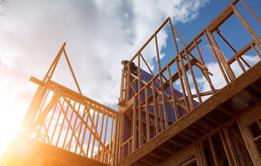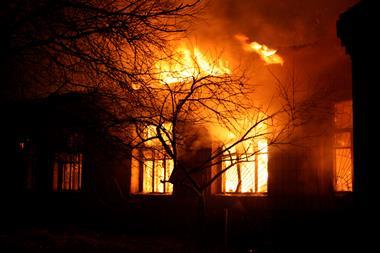Brokers can play a key role as educators to support the construction sector to use more timber in a bid to reduce carbon emissions
Insurers need to ask more questions and collaborate with the construction sector in order to “get to grips” with the use of structural timber within property building, as a lack of understanding could prevent the construction industry from achieving the government’s 2050 net zero target for carbon emissions.
Historically, the insurance sector has been wary of insuring timber structures due to the perceived increased fire risk compared to concrete or metal. However, in order to meet the government’s goal of reaching net zero for carbon emissions by 2050, the construction sector is looking to use more timber as a sustainable solution.
To overcome this potential clash, Marcus Saunders, client services executive at Gallagher, said that insurers “need to get to grips” with timber frames and “open up their eyes”.
Speaking at an Insurance Times webinar today, titled ‘Are insurers preventing the construction sector from hitting its 2050 net zero targets?’, he said: “Insurers really need to get to grips with understanding how these timber frames are built, what’s gone into them, the engineering, the materials used, show that there is nothing to fear. It’s sustainable, it’s greener and it is what the government wants us to build. Insurers need to ask more questions about what type of erecting company is being used, what type of designing company is being used? Insurers need to start asking questions, start saying ‘right, we want to do this’.
“Insurers [need to] open up their eyes. I would like insurers to really start understanding what’s going and start listening. It’s a good time now for timber.”
Past experience
Fellow panellist Andrew Carpenter, chief executive of trade body the Structural Timber Association (STA), said part of the problem here is that previously, “maybe underwriters haven’t been engaged in projects and they hear anecdotal evidence without actually looking at the facts and the evidence that we ask and insist upon”.
He added: “I think it’s a question of culture and I think it’s a question of behaviour because we’ve always done it that way and that’s how we seem to carry on.”
Saunders, on the other hand, feels that “insurers are very twitchy post Grenfell”, which makes the role of education even more crucial if insurers are to better understand the risks, as well as fire retardant measures, surrounding timber structures.
“We need to ensure that confidence can come back into the construction sector and the insurers, make sure everybody’s happy with where we’re going forward. This is a learning curve. We need to tell insurers that,” Saunders emphasised.
Furthermore, brokers can play a central part as educators to the wider insurance sector.
Saunders continued: “We’ve got to stop looking back, we’ve got to start looking forwards. Brokers out there should be telling underwriters, ‘look how good X, Y and Z are doing, look what they’re putting in place’. We need to share more information. I work with a lot of insurers now in tripartite with my clients because they want to understand what’s going on now, they want to move forward with that client.”
This push for information to share with the insurance industry is welcomed by Carpenter. He said: “The insurance industry is a key part of the construction supply chain and influences the way in which we operate in many ways. What really encourages me is I’m seeing the insurance industry wanting to learn, wanting to be educated in the use of structural timber systems.
“I think there’s an acknowledgement that the use of structural timber is going to be on the increase and if they don’t insure it, then obviously they’re going to cut off a lot of the market which they could operate in. So, what pleases me is we’re getting a lot of requests for information and education.”
The real issue
Carpenter added that insurers need to think beyond the potential fire risks of timber structures and look to the bigger picture – the ramifications of climate change, such as extreme weather events, will have a greater impact on the insurance sector compared to the threat of fires from timber, he said, suggesting that insurers should, therefore, be more receptive to the use of timber.
“The bigger problem coming up on the horizon for insurers is actually aligned to the climate crisis,” he said. ”It’s something I think that insurers are going to have to address, the issues that are coming forward because of the climate crisis.”

Hosted by comedian and actor Tom Allen, 34 Gold, 23 Silver and 22 Bronze awards were handed out across an amazing 34 categories recognising brilliance and innovation right across the breadth of UK general insurance.
Topics
Insurers need to ‘get to grips’ with timber to progress construction’s net zero targets

Brokers can play a key role as educators to support the construction sector to use more timber in a bid to reduce carbon emissions
 Currently
reading
Currently
reading
Insurers need to ‘get to grips’ with timber to progress construction’s net zero targets
- 2























































No comments yet